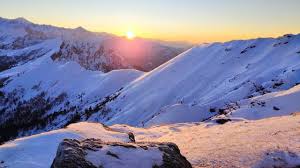Uttarakhand Tourism: Places, Culture, and Nature in One Frame
Uttarakhand Tourism stands out as one of India’s most soul-stirring travel experiences. Nestled in the lap of the Himalayas, the state is a blend of raw nature, spiritual roots, serene valleys, wildlife, and vibrant cultural life. Whether you’re planning a calm retreat in the mountains, seeking spiritual peace, or dreaming of an adrenaline-packed trekking adventure, Uttarakhand has something for every traveler.
Let’s take a closer look at what makes Uttarakhand Tourism so compelling—from the destinations and spiritual circuits to wildlife zones and regional food that shape its unmatched identity.
1. Introduction to Uttarakhand Tourism
Uttarakhand, often referred to as the “Land of the Gods” (Devbhoomi), is not just about scenic beauty—it’s deeply connected to India’s spiritual and ecological heritage. Home to some of the most sacred temples and pilgrimage sites, it draws not only tourists but seekers of peace and meaning.
Uttarakhand Tourism is governed by its mountains, rivers, and ancient traditions. The landscape varies dramatically—from snow-clad peaks in the north to lush green hills and flowing rivers in the south. It borders Tibet, Nepal, Himachal Pradesh, and Uttar Pradesh, making it geographically and culturally diverse.
2. Top Destinations Under Uttarakhand Tourism
Here are the most visited and most loved destinations under Uttarakhand Tourism:
a) Nainital
Set around a crescent-shaped lake, Nainital is a peaceful hill town perfect for a family getaway. Boating in Naini Lake, walking around Mall Road, or taking a cable car ride to Snow View Point—Nainital delivers timeless memories.
b) Mussoorie
This ‘Queen of the Hills’ is a British-era town that still holds onto its colonial charm. With Kempty Falls, Gun Hill, and Camel’s Back Road, Mussoorie is a must-visit in the Uttarakhand Tourism map for honeymooners and families alike.
c) Rishikesh and Haridwar
If spiritual energy had a physical form, it would look like Rishikesh and Haridwar. On the banks of the Ganga, Haridwar is known for its Ganga Aarti, while Rishikesh is both a spiritual town and an adventure hub offering river rafting, camping, and yoga retreats.
d) Auli
Auli is India’s top skiing destination. Blanketed in snow during winter, it’s also a great place for trekking in the summer. With panoramic views of the Nanda Devi range, Auli enhances the adventure aspect of Uttarakhand Tourism.
e) Jim Corbett National Park
One of India’s first and finest wildlife reserves, Jim Corbett is home to tigers, elephants, leopards, and hundreds of bird species. Jeep safaris and nature walks through the dense Sal forests make this park a vital part of Uttarakhand Tourism.
3. The Spiritual Side of Uttarakhand Tourism
Uttarakhand is the land of ancient pilgrimages and holy rivers. The two major aspects here are:
a) Char Dham Yatra
The holy circuit of Yamunotri, Gangotri, Kedarnath, and Badrinath brings lakhs of devotees every year. Each site sits in the high Himalayas and is associated with deep-rooted mythology and divine significance.
b) Panch Kedar and Panch Badri
Apart from the Char Dham, the five Kedars (Kedarnath, Tungnath, Rudranath, Madhyamaheshwar, and Kalpeshwar) and five Badris (Badrinath, Adi Badri, Bhavishya Badri, Vridha Badri, and Yogadhyan Badri) are sacred destinations that define the spiritual essence of Uttarakhand Tourism.
4. Adventure and Eco-Tourism in Uttarakhand
Uttarakhand Tourism isn’t just about visiting places—it’s about living through experiences. The landscape offers unmatched adventure opportunities.
a) Trekking Routes
Some of the most rewarding Himalayan treks are found here:
-
Valley of Flowers
-
Kedarkantha
-
Roopkund
-
Har Ki Dun
-
Pindari Glacier
Each trail offers breathtaking views, alpine meadows, and interactions with local Garhwali or Kumaoni culture.
b) River Rafting and Camping
The stretch between Shivpuri and Rishikesh is India’s most famous white water rafting zone. Riverside camping under starlit skies adds to the magic of this region.
c) Paragliding and Bungee Jumping
Towns like Mukteshwar, Ranikhet, and Naukuchiatal offer paragliding with stunning views. Rishikesh has India’s highest bungee jumping spot at Mohanchatti.
d) Skiing in Auli
During peak winter, Auli becomes a skiing paradise with well-managed slopes and ski lifts. Uttarakhand Tourism also promotes ski training here.
5. Local Culture and Festivals
Cultural richness makes Uttarakhand Tourism more than just sightseeing. The state’s art, music, and festivals connect travelers to its deep traditions.
a) Folk Music and Dance
Traditional songs like Jagar, Chhopati, and Bhotiya music narrate stories of gods and local legends. Dances like Barada Nati and Langvir Nritya are performed during local fairs.
b) Kumbh Mela and Local Fairs
Haridwar hosts the world-famous Kumbh Mela every 12 years, gathering millions for a ritualistic dip in the Ganges. Local festivals like Nanda Devi Raj Jat Yatra are equally important.
6. Regional Cuisine of Uttarakhand
The food of Uttarakhand is simple, nutritious, and hearty. It is mostly vegetarian due to the state’s spiritual leanings, but full of flavor.
a) Garhwali Dishes
-
Kafuli (spinach-based dish)
-
Chainsoo (black gram curry)
-
Phaanu (lentil soup)
-
Aloo ke Gutke (spicy potatoes)
b) Kumaoni Delights
-
Bhatt ki Churdkani
-
Bhang ki Chutney
-
Thechwani (radish or potato curry)
-
Singodi (sweet wrapped in leaves)
Trying local food is an essential part of experiencing Uttarakhand Tourism.
7. Wildlife and National Parks
Apart from Jim Corbett, Uttarakhand Tourism promotes many protected reserves:
-
Rajaji National Park – Elephants, tigers, leopards, and rich birdlife.
-
Binsar Wildlife Sanctuary – Famous for its Himalayan views and birdwatching.
-
Govind Pashu Vihar – A lesser-known but extremely scenic sanctuary in Uttarkashi.
-
Nanda Devi Biosphere Reserve – A UNESCO World Heritage Site known for its biodiversity.
Wildlife lovers and eco-tourists find peace in these zones, far from commercial chaos.
8. Best Time to Experience Uttarakhand Tourism
Due to its varied terrain, Uttarakhand is a year-round destination, but your ideal time depends on your interest:
-
Summer (March–June): Ideal for hill stations, trekking, and pilgrimages.
-
Monsoon (July–September): Not ideal due to landslides but perfect for lush green views.
-
Winter (October–February): Great for snowfall in Auli, Chopta, and Mukteshwar.
Planning your trip around the right season can shape your entire Uttarakhand Tourism experience.
9. Sustainable Travel in Uttarakhand
With increasing footfall, Uttarakhand Tourism has embraced eco-friendly practices. Homestays, community-run eco-lodges, solar energy projects, and village-based tourism are helping reduce the environmental footprint. Tourists are encouraged to carry reusable water bottles, avoid plastic, and respect the local culture.
Participating in responsible tourism adds real value to your journey while supporting the local communities.
10. How to Reach Uttarakhand
By Air: Jolly Grant Airport (Dehradun) is the main gateway by air, connected to Delhi and other metros.
By Rail: Key railway stations include Haridwar, Dehradun, Rishikesh, Kathgodam, and Nainital.
By Road: The state has a well-maintained road network with regular buses and private cabs available from Delhi, Chandigarh, and other northern cities.
Good connectivity makes Uttarakhand Tourism accessible, even for weekend travelers.
Final Thoughts on Uttarakhand Tourism
Uttarakhand Tourism is not just about sightseeing—it’s a connection with nature, a walk through ancient legends, a lesson in simplicity, and a refreshing break from the city’s rush. Whether you are hiking to a glacier, sitting beside a gurgling stream, or taking a dip in the Ganga, you’re part of something real, raw, and powerful.
Every traveler returns with something—peace, perspective, stories, or even just cleaner lungs. That’s the quiet promise this Himalayan state offers.
If you’re planning your next trip, let Uttarakhand Tourism surprise you. It always does.




